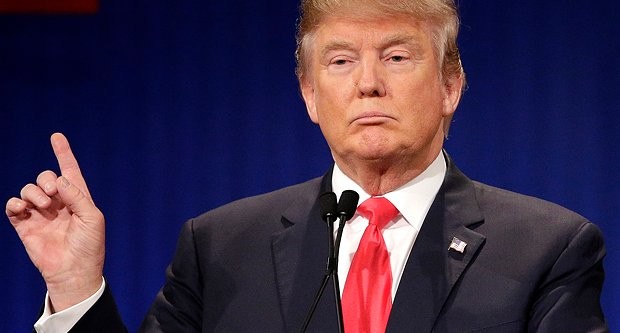
–By Professor Ramin Jahanbegloo, Vice Dean, Jindal Global Law School
Iran-US relations have been paved with mistrust and mutual misperceptions since the 1979 Iranian Revolution and the subsequent hostage crisis. As such, the ill-will that has existed between the two governments has been building for years. It is not going to be bridged easily, despite the nuclear deal of June 2015, with the arrival of Donald Trump at the White House. Let us not forget that the recent landmark meeting between Israel’s prime minister, Benjamin Netanyahu, and Donald Trump was not just on Israeli-Palestinian issues, but also on the future of the Islamic Republic of Iran. Trump’s aggressive rhetoric and implied threats for Iranian leaders may be enough to make them believe that the deal would not last more than a year or two.
The Trump administration is also renewing the possibility of a violent confrontation with Iran, because hatred towards Iran in the new US administration seems to outweigh all forms of rational diplomacy. However, for Iran, these turbulences present unique challenges, while at the same time offering some economic and strategic opportunities.
Firstly, there is no question that over the last 15 years, Iran’s regional position has strengthened. The US invasion of Iraq produced the happy coincidence of toppling a key regional adversary and significantly weakened Tehran’s principle extra-regional foe.
Secondly, in the past two years, Iran-Russia relations have reached an unprecedented peak, fuelled by military cooperation in Syria, a shared vision of the global order and mutual criticism of Western policy in the Middle East. Tehran is a useful ally to Moscow in a highly unstable region, but it is just one thread in Moscow’s patchwork of important relationships. On the other hand, Moscow offers Tehran a critical means of protecting its regional security interests. The new closeness between Moscow and Tehran in Syria has already had serious consequences for everyone. It has strengthened Bashar al-Assad’s hand, increased violence, resulted in more refugees flowing into European countries and further marginalised Europe on the diplomatic track. There is also a mutual desire to push back the US presence in the region. This is likely to provide a platform for more intensified cooperation between Moscow and Tehran.
However, Iran is not blind to the fact that the Syrian conflict has created new openings for Russia and Saudi Arabia in ways that could be harmful to Iranian interests, and it remains alert to this possibility. But overall, Tehran is confident that it remains Moscow’s preferred partner on the ground in Syria relative to the Saudi-backed opposition groups who want a fundamentally different political and security order in Damascus. Therefore, from my point of view, it is feasible to say that military relations between Moscow and Tehran could have wider consequences beyond the Syrian theatre. In other words, despite the arrival of Trump at the White House, the new dynamic between Moscow and Tehran is likely to shape the Middle East for some time to come.
So, either in the form of shaping alliances or establishing zones of influence, it is certain that Iran is developing a more assertive foreign policy in the Middle East. But to sustain Iran’s regional position, the Iranian president Hassan Rouhani will need to reach some form of modus vivendi beyond the nuclear deal with the Trump administration. All this is worrying in itself. Making matters worse, however, is not only the hardening of the US position towards Iran, but the fact that Iranian hawks would welcome a chance to entangle America in a long war, even if their country becomes the greatest victim of such a conflict; some in Iran would willingly sacrifice Iran to bring about a cataclysmic denouement in the Middle East.
A US-Iran confrontation that might even lead to open conflict may provide just such an opportunity. The biggest worry is also the reaction of the Iranian Revolutionary Guards in case Rouhani is not re-elected in the next Iranian presidential elections in May 2017. Islamic Revolutionary Guard Corps (IRGC) generals continue to go out of their way to remind Trump that this political-military organisation of some 1,20,000 armed men is a dangerous adversary of the US. In just the last few weeks, top IRGC commanders taunted the United States as a “paper tiger” that should give up its claim of being a superpower, all the while lampooning Trump as an “amateur”.
While it is true that anti-Americanism is a core part of the worldview of the top IRGC leadership, they are far from suicidal. A more forceful US stance against their policies is likely to shape their calculations. But there are already signs that the IRGC bosses believe it is essential they reduce provocative actions against the US, especially as the Trump team formulates its Iran policy. It took the Revolutionary Guard’s generals some 20 years to impose their rule on the Iranian people: They are not ready to let go of their power.
This explains why the Trump administration is considering a proposal that could lead to potentially designating Iran’s powerful IRGC as a terrorist organisation. It could strengthen the hardliners, undercut moderates like Rouhani, and encourage Iranian-backed forces in Iraq and Syria to curtail action against the Islamic State. One way or another, uncertainty over Trump’s Iran and regional policies, Iran’s presidential election in May and economic hardship that might lead to street protests will force the establishment to give more power to the IRGC. We need to wait and see how things will progress in the Middle East with the new Trump administration, but one thing is certain: This will lead to a much more militaristic strand of politics in Tehran.
